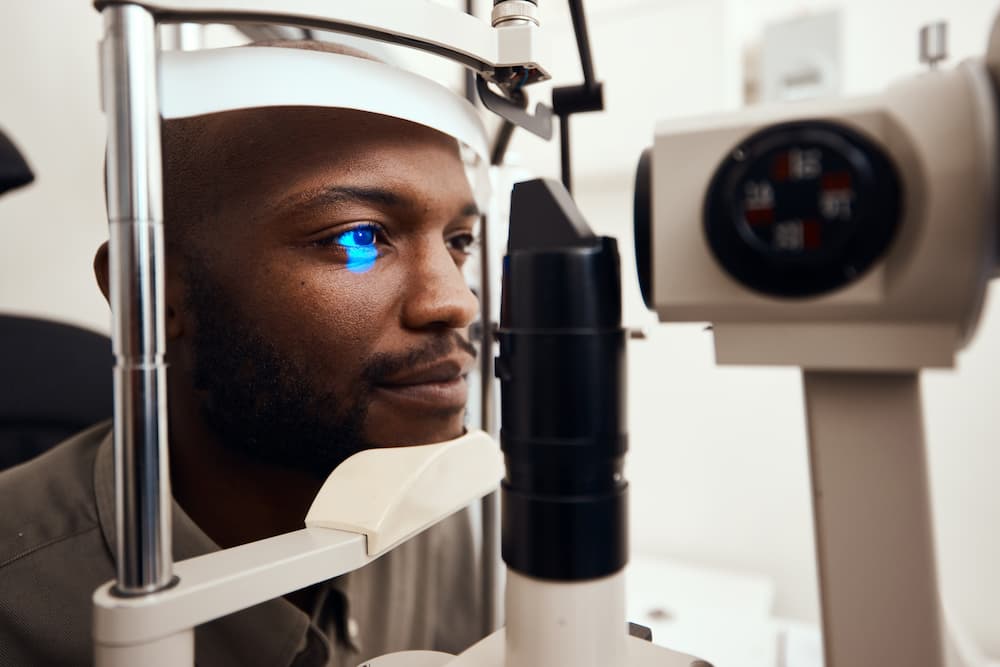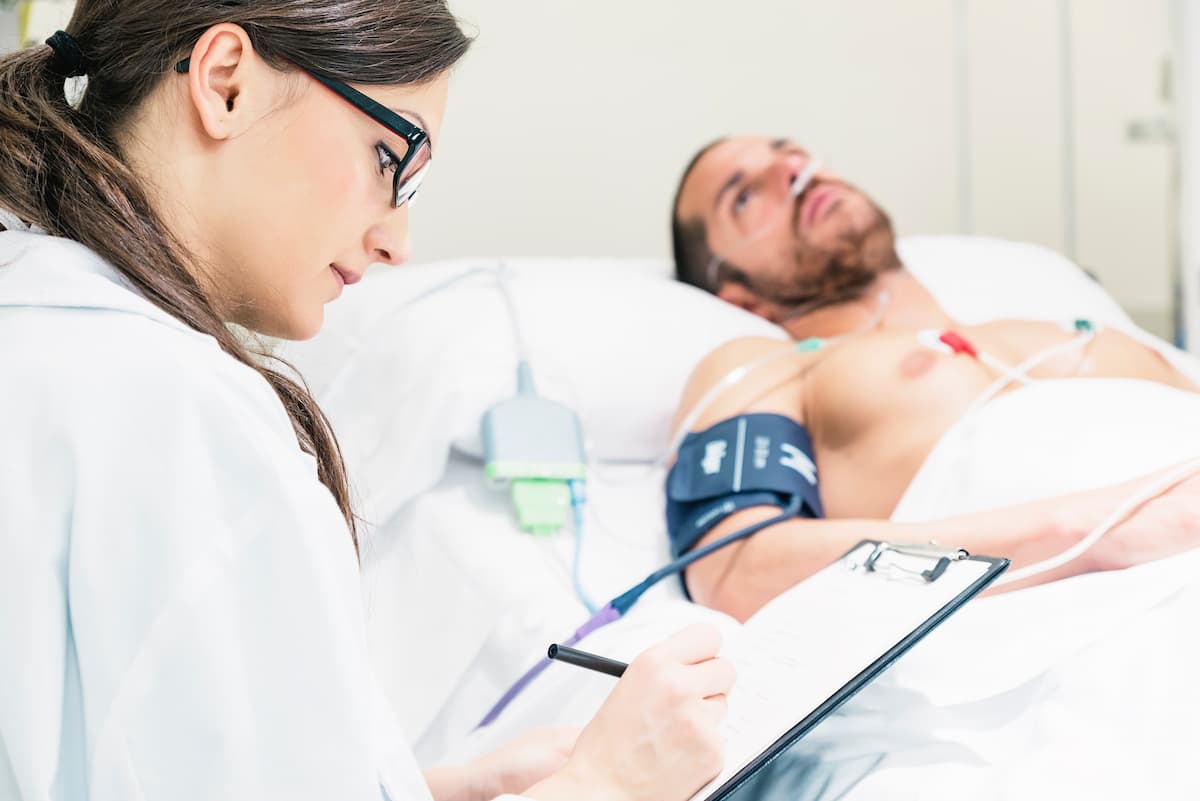It can be confusing to know whether you need to go to the emergency room, make an appointment with your primary care physician, call 911, go to a walk-in clinic like CVS Minute Clinic, or go to an urgent care facility. Each of these types of facilities actually offers very different services, even though there is indeed some overlap.
What Is an Emergency Room?
Emergency rooms are located in hospitals. Like the hospitals they are located in, emergency rooms are open all the time, 24 hours a day, 365 days a year. Emergency rooms are staffed with doctors and nurses and offer the most sophisticated medical equipment for testing, treating, and diagnosing patients. Emergency rooms can adequately handle the most serious medical problems.
According to the Centers for Disease Control and Prevention (CDC), only 3% of the people who admit themselves to the ER are transferred to other hospitals, such as psychiatric facilities. This indicates that most people who seek medical treatment at the emergency room are able to be treated there. Additionally, 14% of those who come into the emergency room are hospitalized. Other medical facilities that are not connected to hospitals would not be able to offer admission if it was something you needed. While these statistics are telling, it is crucial to understand that emergency rooms are largely understaffed. Research also shows that:
- The average emergency room wait now is 5-8 hours, which has caused the ER fatality rate to climb 8%.
- Some emergency rooms have average wait times of 8-12 hours, in which the mortality rate increases to 10%.
What Is Primary Care?
In order to better understand what urgent care is, it’s best to start with an understanding of what primary care is first. The term “primary care” refers to the main doctor that you see for non-emergency medical care, like prevention, diagnosing and treating chronic diseases, and education/advocacy.
A primary care doctor is trained for general medical care, meaning they know a little about most areas of medicine to best direct you and guide you as a first point of contact (unlike specialists who know a lot about just one area of medicine). Primary care doctors generally recommend the other types of doctors you may need and help coordinate getting you those other services.
Recent research shows that the average wait time to see a primary care doctor is three weeks (21 days). StatNews.com says this wait is too long and calls this a public health crisis. The wait to see primary care specialists like OB/GYNs or dermatologists is over one month on average. Delays like these in getting the medical care that people need are increasing morbidity from preventable, treatable diseases.
Seventy-five percent of Americans simply go to the ER when they can’t bear the wait to see their main doctors. Unfortunately, this failure in the medical system has flooded emergency rooms with people who are not experiencing life-threatening emergencies. This is where the concept of urgent care comes from.
What Is Urgent Care?
Urgent care centers started cropping up in the 1970s to help people with medical problems that could not wait weeks to be treated but were also not life-threatening. Prior to the 70s, primary care doctors would have been responsible for treating urgent medical problems like a Shingles rash or a broken bone.
Urgent care centers fall between primary care clinics and hospitals in their level of staffing and on-site medical equipment. Their staffing and equipment can vary, but they tend to have fewer doctors, if any, and more medical support staff like nurses and physician’s assistants. They typically have equipment like X-ray machines but are less likely to have CT and PT scans.
When Should You Go to Urgent Care?
If you can’t get in to see your primary care doctor soon enough, go to urgent care. Here are some popular (and appropriate) reasons that people go to urgent care:
- Diarrhea
- Rash
- Flu symptoms
- Coughing, sore throat
- Fever
- Ear ache
- UTI (urinary tract infection)
- Nausea, vomiting
- Pink Eye
- Sprain
- Bloating
- Breathing problems
- Shingles
- Cuts that might need a few stitches (no serious blood loss)
- Small allergic reactions
Uninsured people should go to urgent care before an emergency room whenever possible because the cost is so much less. It is important to point out that urgent care copays can be 2-3x more than primary care copays, so if you can wait to see your primary physician, that might be best.
When Should You Go to the Emergency Room?
The average emergency room visit costs over $2,000 with insurance. Research indicates that 30% of emergency room visits are not actually emergencies. So, again, seek out urgent care first unless you have any of the following actual medical emergencies:
- Seizure
- Broken bone
- Choking
- If you are in labor
- Serious burn
- Serious snake or dog bite
- Concussion
- Ingested poison
- Suicide attempt
- Fever accompanied by a rash
- Slurred speech
- Severe abdominal pain (such as appendicitis)
- Spinal cord injury
- Head injury (fainting, confusion)
- Sexual assault
- Vaginal bleeding during pregnancy
- Chest pain
- Drug overdose
- Bleeding profusely (wounded)
- Serious frostbite/hypothermia
- Serious dehydration/heat stroke
- Got electrocuted
- Feeling weak or numb on one side
Again, emergency rooms should only be visited for the most life-threatening, urgent medical problems. The American College of Emergency Physicians studied ER visitors and found that:
- 19% did not know what urgent care is
- 31% mistakenly thought their condition constituted a medical emergency
- 47% did not realize that urgent care centers maintain the same standards for care as emergency rooms
When to Call 911
911 is a toll-free emergency hotline in which a specially-trained police dispatcher can program a nearby first responder (ambulance, fire department, police officer) to come to your location for help within minutes. Whether to go to the emergency room or call 911 is also another dilemma. The answer to this question depends on several factors:
- Are you well enough to drive yourself to the nearest emergency room? Can someone else drive you?
- Do you have a car? Are you a licensed driver?
- How far away are you from the nearest emergency room?
- Do you know where the nearest emergency room is?
In general, if you or a loved one is actively fighting for their life (having a heart attack, choking on a foreign object, actively experiencing a seizure or stroke, drowning), calling 911 is the obvious choice. In situations like these, someone could be dead in a matter of minutes, and calling 911 is the fastest way to start getting treated. The average 911 response time is as fast as 5-6 minutes in most urban areas.
Remember calling 911 is free, and if they do not consider your situation an emergency, they will let you know how to best proceed. For example, the 911 operator can tell you where the nearest emergency room is, to hang up and call poison control, etc. If they do send an ambulance to your location while you are waiting for their arrival, the operator will stay on the line with you and tell you exactly what you need to do to help save your loved one’s life (or your own).
911 operators can walk you through how to perform CPR on a baby, how to stabilize someone’s head and back after a serious fall, or whatever your situation is. When you call 911, the operator will ask you where you are located. Be prepared with cross streets and/or landmarks. You will need to describe what your emergency is. You do not need to speak English. They will also ask you what phone number they can call you back at in case you get disconnected. Remember, do not hang up until the operator tells you to.
Walk-In Clinics
Another type of medical facility is the walk-in clinic. A walk-in clinic falls between primary care and urgent care on their scale of treatments. An example of a walk-in clinic is the CVS Minute Clinic or the doctors located inside pharmacies in Mexico, such as a “consulta” in a Farmacia Similares.
Walk-in clinics usually have regular business hours (i.e., they are not open 24/7) and do not have actual doctors on staff. Walk-in clinics are great for work- or school-related medical needs, like getting a TB test, vaccination, or sports physical. A walk-in clinic can also treat:
- Colds
- Pink Eye
- Sore throat
- Rash
- UTI (urinary tract infection)
If You Have a Dental Emergency
Just to clarify, only dentists can work on your teeth. Hospitals, emergency rooms, urgent care centers, and walk-in clinics are not likely to have dentists on staff. If you fell down and knocked a tooth loose, for example, the only thing one of these facilities can do for you is offer pain relief and antibiotics. Only a licensed dentist can extract that loose tooth for you. There are dentists all over the country that offer after-hours emergency services.
To locate one of these dentists, just google “emergency dentist near me.” An emergency trip to the dentist costs the same as a regular visit to the dentist. There may be an “after-hours surcharge,” but it’s not going to be anything like the upcharge you’d pay at an emergency room. You should also know that the Affordable Care Act requires health insurance companies to cover emergency dental care costs. Whatever deductible or copay you normally pay, by law, must remain consistent with your non-emergency costs.
If You Have an Eye Emergency

- Foreign object in your eye (particularly metal debris)
- Chemical burn in your eye
- Cut or scratched eye
- Seeing “floaters” or flashing lights
- Any sudden, serious change in your vision, including severe eye pain or double vision
- Blood in the white part of your eye
Just like with dental treatment, there are emergency ophthalmologist services available without needing to go to the emergency room. Ophthalmologists are doctors who specialize in eye and vision care, also simply known as “eye doctors.” They can do everything from eye surgery to treating eye trauma.
Just like with dentists, you would be hard-pressed to find any emergency room or urgent care center with an eye doctor on staff. However, hospitals are more likely to have ophthalmologists on staff than dentists though. Most emergency rooms have eye doctors on call who can respond to the hospital to treat you. If you believe your eye requires surgery, going to the ER is often the best route since most eye doctors do not have operating rooms in their offices. If you have any of the following eye problems, an urgent care center should be able to adequately treat you:
- Swollen eyelid
- Itchy eyes
- Burning sensation in your eyes
- Eye discharge
- Redness
- Pink Eye
Remember, at an urgent care center, whoever treats your eye problem will not be an eye doctor.
If You Have a Mental Health Emergency
Six percent of emergency room visits for adults and 7% for children are due to mental health emergencies. The most important reason to get to an emergency room is if you feel suicidal and are scared for your own safety (or a loved one). People also seek out ER services for:
- Panic attacks
- Depression
- Hallucinations
- Bipolar Disorder
- Delusions
- Schizophrenia
- Obsessive-Compulsive Disorder
- Post-Traumatic Stress Disorder
- Paranoia
- Anxiety Disorder
- Aggression
- Experiencing side effects from medication, like hearing voices
- Prolonged insomnia
A hospital can place an individual under psychiatric evaluation, suicide watch, and offer sedation. Most hospitals have chaplains, trauma or crisis counselors, and similar support staff available. They can provide you with a safe, quiet place, a warm blanket, someone to talk to, and something to eat. If you are experiencing a mental health emergency, you can also call a crisis hotline or 911. Some cities do have psychiatric urgent care centers. Just like an emergency room is embedded in a hospital, psychiatric urgent care centers are often connected to psychiatric hospitals or facilities. Most regular urgent care centers do not have the kind of crisis services available that either an emergency room or psychiatric urgent care facility would. A walk-in clinic would be even less equipped to help with a mental health emergency.
If You’ve Been Sexually Assaulted
If you’ve been raped or molested, the only facility that can capture the necessary medical evidence (i.e., a “rape kit”) is a hospital emergency room. While an urgent care center can help you with minor injuries or assist you in getting a “morning after” pill or medication to prevent sexually transmitted diseases, they do not offer rape kits.
Because a rape kit is a forensic exam (i.e., investigating a crime scene), only specially trained nurses can perform them. The evidence collected must be placed in special police evidence bags. In addition, the forensic nurse will take photos of your injuries (you do not need to worry about the police photographing your private areas).
By law in California, the hospital will also reach out to an on-call victim advocate who can be with you throughout the exam, offering emotional support, pamphlets, answering questions, and following up with you later to see how you are. This person can also sit outside during your exam if you prefer. There is no charge to have a rape kit exam completed. For the best results on your rape kit, do not eat, shower, urinate, change clothes, or do anything else that might destroy the physical evidence (exercise, brush your teeth, douche). If you are not comfortable with certain parts of the exam, you can refuse them. None of the process is mandatory in any way. The purpose of the rape kit is to collect evidence to help prosecute your attacker in the future, which, of course, is not required.
Preparing to Visit a Medical Center
It’s always helpful to have a list of over-the-counter and prescription medications and supplements you are currently taking (including doses) before you arrive at any medical facility for treatment or diagnosis. Be sure to bring along a list of what you’re allergic to as well.
Additionally, any medical professional is going to want to know what surgeries you’ve undergone and when, plus who performed them. Women will be asked for the date of their last menstrual period, even if the issue is not a feminine problem (broken bone, car crash).
It’s also helpful to have your primary care physician’s information available (name, address, phone number). If you don’t have time to gather this information because of the urgent nature of your medical problem, that’s OK too.
Newport Urgent Care Can Help
If you are experiencing a medical problem suitable for treatment at an urgent care center, please consider Newport Urgent Care. Our facility is well-equipped and well-staffed for all of your urgent medical needs. We are located at 1000 Bristol Street North #1B, Newport Beach, CA, 92660. Click here to book an appointment online with us, or call us at 949.832.6347 or 949.990.5051.





